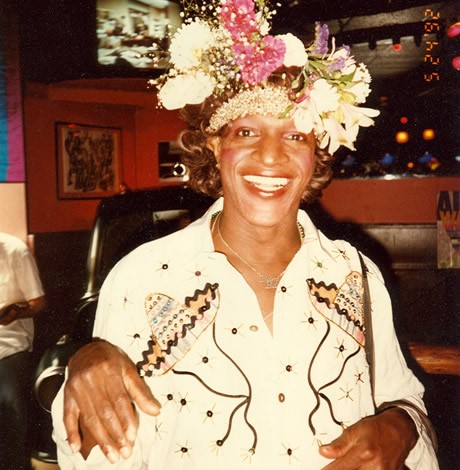
Furman University Symphonic Band
South Carolina Music Educators Conference
General Session - 10:30 am
February 4, 2022
Columbia Metropolitan Conference Center
Columbia, SC
Dr. Sue Samuels, conductor
with special guests
Mr. Anthony Parnther, guest conductor
Mr. Jay Bocook, guest conductor, former Director of Athletic Bands, Furman University
Dr. Les Hicken, guest conductor, former Director of Bands, Furman University
Dr. Anastasia Christofakis, clarinetist, Assistant Professor of Music, Furman University
A Mother of a Revolution - Omar Thomas
Bookmarks from Japan - Mvt 1 and Mvt 2 - Julie Giroux
Irish Tune from County Derry - Percy Grainger
Anthony Parnther, conductor
Shepherd's Hey - Percy Grainger
Jay Bocook, conductor
Liquid Ebony, mvt. III - Dana Wilson
Anastasia Christofakis, clarinet
Leslie Hicken, conductor
Dance of the Jesters - Tchaikovsky/Cramer
Mother of a Revolution | Omar Thomas
Omar Thomas is an American composer “born to Guyanese parents in Brooklyn, New York in 1984. He is known for both his jazz and classical styles, and composes for wind ensembles and big bands alike.

Thomas’ piece Mother of a Revolution is dedicated to the lives and stories of trans women of color, particularly Marsha P. Johnson, who is credited as a major force in the beginning of the Stonewall Riots. Otherwise known as the Stonewall Uprising in 1969, this movement was a demonstration against homophobia following a police raid on the Stonewall Inn, a well-known gay bar in New York City. Omar Thomas says of the piece:
“Existing as a trans woman, especially a trans woman of color, and daring to live authentically, creating space for oneself in a transphobic world, is one of the bravest acts I can imagine. Over 20 trans women were murdered in the United States in 2018 alone. There is no demographic more deserving and, frankly, long overdue for highlighted heroism and bravery. The disco vibe in the latter half of the piece is meant to honor club culture, a sacred space held amongst LGBTQ persons in which to love, live, mourn, heal, strategize, connect, disconnect, and dance in defiance of those outside forces who would seek to do LGBTQ persons harm simply for daring to exist and take up space.”
Bookmarks from Japan: Mvts. 1 & 2 | Julie Giroux
Julie Giroux is an American composer born in 1961 in Fairhaven, Massachusetts. Her fourth symphony Bookmarks from Japan is inspired by a gift she had received from a friend, the Director of Bands Emeritus from Indiana University, Ray Cramer – a set of six bookmarks, each depicting a famous Japanese work of art. The first two movements of the piece, “Fuji-San” and “Nihonbashi,” represent the first two bookmarks.

The first movement is based off of Hokusai Katsushika’s art piece “Fine Wind, Clear Morning,” a depiction of the famous Mt. Fuji in the early morning mist. The music depicts the fog slowly being lifted as the sun continues to rise. Mt. Fuji is colored a bold red, painted by the sun’s first rays.
The second movement is named “Nihonbashi,” or “Market Bridge.” It is inspired by the print Nihonbashi by artist Hiroshige Ando, a depiction of the bridge bursting with life, as people go about their daily lives. The vivid colors add to the energy of the piece – the deep blue of the water under the bridge and the red sky act as a backdrop for the action of the foreground. Julie Giroux expresses this energy through her music – the melody is passed between instruments constantly to represent the exchange and interaction of the people of the market.

Some of Julie Giroux’s popular works for band include One Life Beautiful, Riften Wed, Hymn for the Innocent, In the Bleak Midwinter, and Bookmarks from Japan.
Irish Tune from County Derry by Percy Grainger
COUNTY DERRY AIR British Folk-Music Settings, Nr. 29 The tune now recognized as “Danny Boy” was virtually unknown when Grainger came across it in The Petrie Collection of the Ancient Music of Ireland, a work first published in 1855. His discovery of the tune most likely occurred in 1901, shortly after he moved to England to embark upon a career as a solo pianist, and several years before he began collecting folksongs on his own. Grainger’s first setting was for a six-part a cappella chorus, an arrangement made between 1902 and 1904. As is often the case in his folk music settings, Grainger credits his source, including George Petrie’s annotation to the melody: For the following beautiful air I have to express my very grateful acknowledgement to Miss J. Ross, of New Town, Limvady, in the County of Londonderry, a lady who has made a large collection of the popular unpublished melodies of the county . . .. The name of the tune unfortunately was not ascertained by Miss Ross, who sent it to me with the simple remark that it was “very old,” in the correctness of which statement I have no hesitation in expressing my perfect concurrence. The setting for chorus was later adapted by the composer for a variety of ensembles, including string orchestra, concert band, and full orchestra. Around 1920, in the midst of creating these orchestrations of essentially the same beautiful but straightforward arrangement, the composer decided upon a radically different approach in a version he conceived for chorus, harmonium, and an “elastic” combination of orchestral and/or band instruments. It is a highly chromatic and haunting treatment that reveals Grainger at his idiosyncratic best. In a 1944 letter to friends, the composer wrote, “Ella & I have just come from Oberlin College, Ohio, where I gave . . . my seldom-done ‘County Derry Air’ (which is the setting of ‘Irish Tune from County Derry’ written in 1920 for sing-band [chorus], organ & band—a setting which has nothing in common with the 1902 setting. The 1920 setting has a Handel-like breadth & grandness about it.)” Although the need for an alternate title to differentiate between Grainger’s two divergent treatments is easy to understand, the reason for the slightly suggestive title “County Derry Air” remains a mystery, although noted Grainger authority Barry Ould reports that the composer’s copious writings contain a few “ribald comments relating to the ‘Derry Air’ portion of the title!
-Notes from the President's Own Marine Band "The Music Lover's Grainger"
Shepherd’s Hey | Percy Grainger
Percy Aldridge Grainger was an Australian composer born George Percy Grainger on July 8, 1882. As a young teenager, he moved to Germany to study music, and he later spent time in the UK and travelling extensively. He moved to New York in 1914 and served as a bandsmen in the US during the First World War. Grainger was a collector of folk music, particularly songs of the British Isles. Although a trained concert pianist, he loved the sound of the wind band, particularly of the saxophone. His band compositions portray a unique voice, exploring all of the varied colors of the woodwind, brass, and percussion families.
Shepherd’s Hey by Percy Grainger is a song for a Morris Dance, a “centuries-old tradition of group dancing in England.” While the piece was originally written for a casual small ensemble, it was arranged for band by Grainger in 1909. When listening to Shepherd’s Hey, the influences of dance are evident through the upbeat tempo and the jovial nature of the work.
Some of Percy Grainger’s popular works for instrumental ensembles include Irish Tune from County Derry, Molly on the Shore, Lincolnshire Posy, and Shepherd’s Hey. The Furman Symphonic Band is excited to participate in the Grainger Festival in Chicago this coming March 24-27, 2022. We hope you will follow us as we prepare for this prestigious performance opportunity where we will also perform Grainger’s iconic Linconshire Posy.
Liquid Ebony by Dana Wilson
III. Dance of not Pretending
Many instruments can express both exuberant joy and dark pathos, but the clarinet has the ability to express both almost at once, moving instantly with liquid grace from one to the other. It seems that is why it is such a perfect choice for Eastern European folk traditions, including well known Klezmer music: it implores, not to forget about or deny life’s difficulty, but to sing and dance joyously and defiantly in its midst. It is this sense of the clarinet that informed the composition of this piece. On the surface, each movement is rather different in nature, but the tenacious reinterpretation of the same material in each is intended to reinforce the overlaying of contrasting emotions. The first is exuberant yet uncertain, the second introspective yet purposeful, the third a Bulgarian romp amidst an ominous reality. "Liquid Ebony" was commissioned by Larry Combs, principal clarinetist with the Chicago Symphony, and premiered with pianist Gail Niwa at the 2003 Clarinet Fest in Salt Lake City, Utah. The version with wind ensemble was commissioned and premiered by the West Point Band with Mr. Combs as soloist, and recorded by John Parrette and the West Point Band. -
-Notes from Dana Wilson.org
Dance of the Jesters by Tchaikovsky, arr. Ray Cramer
Dance of the Jesters is a prime example of Tchaikovsky’s keen sense of musical nationalism. Originally composed as incidental music for the ballet The Snow Maidens, the dance forever captures the color and zest of Russian folk dance music. The ballet about the Snow Maiden, the daughter of Father Frost, tells of her forbidden love with a human, Misgir, who is already betrothed to Coupava. The Snow Maiden follows him southward with plans to interrupt his wedding, but tragically melts under the rays of the southern sun.
Upon meeting Nikolai Rimsky-Korsakov in 1868, Tchaikovsky renewed his keen sense of musical nationalism. Inspired by the master composer, Tchaikovsky's compositional style would forever capture the color and zest of Russian folk dance and music. The flurry, energetic drive and playful melodies associated with his ballet scores are all heard in this rare and invigorating music. This edition comes from an arrangement from the ballet The Snow Maidens that was originally transcribed for a Russian military band.
-Note from Ray Cramer, Wind Repertory Project
